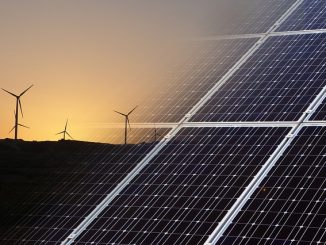
Managing an energy transition is now the challenge for all countries under the pressure of the global greenhouse gas reduction targets. Above all, the debates in all countries show that an energy transition is reflected and described first of all as an evolution of the energy mix of each country. As each country has a different starting mix, each transition will be unique.
But can we consider today that there is an ideal mix? Are there unavoidable technologies and other undesirable ones? Can we imagine that one or two technologies dominate the energy world of tomorrow?
Let’s try to give an overview of the question.
Firstly, the energy transition concerns all energies, those related to transport and those used in industry, buildings and our homes, for thermal applications (heating, air conditioning, cooking) but also for the operation of all kinds equipment.
If electricity is a clean, flexible and convenient way of transporting energy and supplying motors or electronic circuits, converting primary energy (biomass, gas, fuel) to transform it into electricity for Joule effect based heating applications Joule, generally offers a lower efficiency than the production of heat directly from these same primary energies. This partly explains the future development of heat networks and the reduction of electrical thermal systems.
But be careful not to be too caricatural: heat pumps offer a device yet consuming electricity, particularly effective in some cases to produce heat or cold.
Reasoning an energy mix, is therefore questioning the place of each primary energy but also that of the main vector of energy transport: electricity (taking into account the possible use of heat pumps).
The choice of energy mix meets four main objectives: the price of energy, the environmental impact, energy independence and security of supply. Each energy has advantages and at the same time has disadvantages. There is no ideal energy. In the coming months, I will provide you with a detailed overview of existing energy sources to discover current and future advantages and disadvantages.
Each of the above objectives must be understood in a systemic and non-restrictive way:
- The price of energy is not just the cost of production. At this cost, is added in all countries, a remuneration component of the networks used to convey this energy from the producer to the consumer. The significant development of intermittent energies, such as solar and wind, will have an impact on this component: it will be necessary to strengthen the network in some places, probably to architect it differently, to deploy storage facilities and to develop more expensive balancing mechanisms: all investments to be amortized that will affect the price of energy.
- The environmental impact is an objective that has gained importance in the face of global warming. It is important to consider the impact of each energy on its life cycle, ie not only during the production period but also during the manufacturing and recycling stages of the associated means of production. What’s more, CO2 emissions are not the only criteria for measuring the impact on the environment.
- Energy independence measures the ability of a country to have energy sources at home: importing oil, gas or coal increases a country’s energy dependence on producing countries. Securing such supplies costs in diplomatic efforts, in financing granted to producing countries, even in conflicts.
But these four goals are not the only criteria for assessing energy sources. The fact of being able to produce regularly is an advantage to consider, (contrary to the intermittence of production), as well as the ability to vary quickly and without difficulty the level of production or distribution.
Our dream of ideal risks, in the light of these first elements, to remain unsatisfied: it will be very difficult for us to keep a small number of energy sources as in the past and even less of homogeneous sources as was the case of oil, coal, gas and nuclear. These four sources have never questioned the topology of the systems: the production of electricity remained centralized, the distribution of gas was the simple routing of a point of importation to the various consumers, all the vehicles or almost used the same type of fuel.
This period is over: we will have to think differently and migrate to energy mixes that will be a mix between many sources of energy, with different characteristics, some offsetting the disadvantages of others and vice versa.
The debates will have to change in nature, the approaches and reasoning will have to be modified in depth.




Leave a Reply